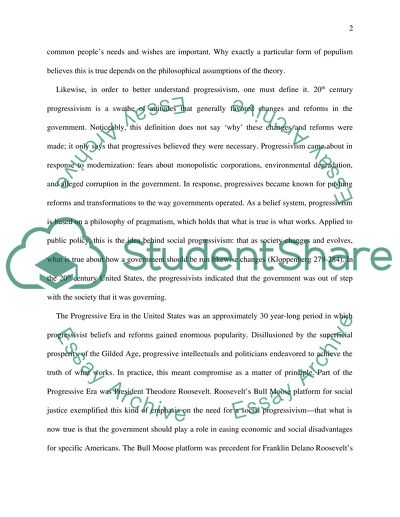Cite this document
(“Explore Populism, Progressivism, the New Deal and the War on Poverty Research Paper - 1”, n.d.)
Explore Populism, Progressivism, the New Deal and the War on Poverty Research Paper - 1. Retrieved from https://studentshare.org/history/1579420-explore-populism-progressivism-the-new-deal-and-the-war-on-poverty-compare-their-goals-noting-similarities-differences-short-term-and-long-term-successes-and-failures-draw-conclusions-from-your-comparisons
Explore Populism, Progressivism, the New Deal and the War on Poverty Research Paper - 1. Retrieved from https://studentshare.org/history/1579420-explore-populism-progressivism-the-new-deal-and-the-war-on-poverty-compare-their-goals-noting-similarities-differences-short-term-and-long-term-successes-and-failures-draw-conclusions-from-your-comparisons
(Explore Populism, Progressivism, the New Deal and the War on Poverty Research Paper - 1)
Explore Populism, Progressivism, the New Deal and the War on Poverty Research Paper - 1. https://studentshare.org/history/1579420-explore-populism-progressivism-the-new-deal-and-the-war-on-poverty-compare-their-goals-noting-similarities-differences-short-term-and-long-term-successes-and-failures-draw-conclusions-from-your-comparisons.
Explore Populism, Progressivism, the New Deal and the War on Poverty Research Paper - 1. https://studentshare.org/history/1579420-explore-populism-progressivism-the-new-deal-and-the-war-on-poverty-compare-their-goals-noting-similarities-differences-short-term-and-long-term-successes-and-failures-draw-conclusions-from-your-comparisons.
“Explore Populism, Progressivism, the New Deal and the War on Poverty Research Paper - 1”, n.d. https://studentshare.org/history/1579420-explore-populism-progressivism-the-new-deal-and-the-war-on-poverty-compare-their-goals-noting-similarities-differences-short-term-and-long-term-successes-and-failures-draw-conclusions-from-your-comparisons.


